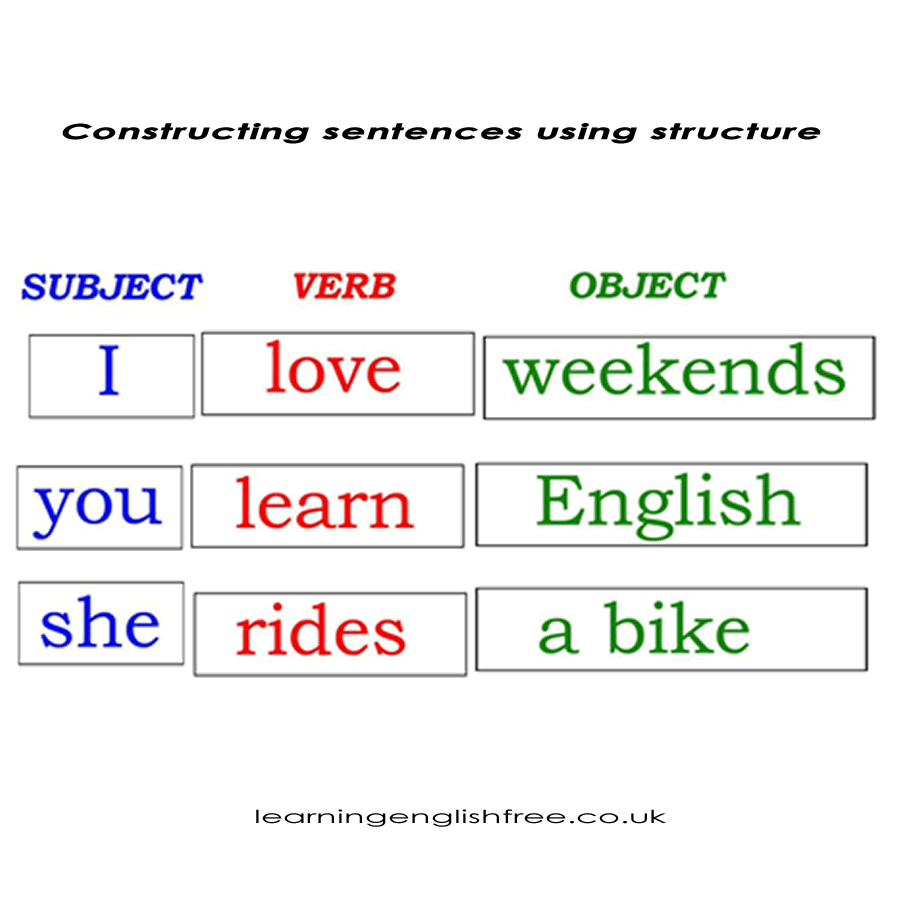
Constructing sentences using structure
Constructing sentences using structure refers to building sentences in a language by following specific grammatical rules and patterns. Sentence structure is crucial in ensuring that sentences are clear, coherent, and correctly convey the intended meaning. In English, a basic sentence structure typically includes a subject, a verb, and often an object. Here's a breakdown:
-
Subject: The person, place, thing, or idea that is doing or being something in the sentence. For example, in "The cat sleeps," "the cat" is the subject.
-
Verb: This is the action word in the sentence or the word that describes the state of being. In "The cat sleeps," "sleeps" is the verb.
-
Object (optional): This is what receives the verb's action. For example, in "She reads a book," "a book" is the object receiving the action of reading.
In constructing sentences, you can add additional elements like adjectives, adverbs, and prepositional phrases to provide more detail and context. For example, "The small cat sleeps peacefully on the couch."
Understanding and using sentence structure effectively is essential for clear communication in English. As you learn more about English grammar, you'll encounter various sentence structures that allow for more complex and varied expressions.
10 Examples of Constructing Sentences Structure
-
Subject (S) + Verb (V): "Birds (S) chirp (V)."
- This simple sentence has a subject ("Birds") and a verb ("chirp").
-
S + V + Object (O): "The dog (S) chased (V) the ball (O)."
- Here, "the dog" is the subject, "chased" is the verb, and "the ball" is the object.
-
S + V + Adjective: "The cake (S) smells (V) delicious (Adjective)."
- "The cake" is the subject, "smells" is the verb, and "delicious" is an adjective describing the cake.
-
S + V + Adverb: "He (S) runs (V) quickly (Adverb)."
- In this sentence, "He" is the subject, "runs" is the verb, and "quickly" is an adverb describing how he runs.
-
S + V + O + Adverb: "The artist (S) painted (V) a portrait (O) skillfully (Adverb)."
- "The artist" is the subject, "painted" is the verb, "a portrait" is the object, and "skillfully" describes how the painting was done.
-
S + V + Prepositional Phrase: "The cat (S) sleeps (V) on the sofa (Prepositional Phrase)."
- "The cat" is the subject, "sleeps" is the verb, and "on the sofa" is a prepositional phrase indicating where the cat sleeps.
-
S + V + O + Adjective: "She (S) wrote (V) an email (O) brief (Adjective)."
- "She" is the subject, "wrote" is the verb, "an email" is the object, and "brief" describes the email.
-
S + V + O + O: "I (S) gave (V) my friend (O) a gift (O)."
- "I" is the subject, "gave" is the verb, "my friend" is the indirect object, and "a gift" is the direct object.
-
S + V + O + Prepositional Phrase: "The teacher (S) explained (V) the lesson (O) to the class (Prepositional Phrase)."
- "The teacher" is the subject, "explained" is the verb, "the lesson" is the object, and "to the class" is a prepositional phrase indicating to whom the lesson was explained.
-
S + V + Adverb + Prepositional Phrase: "The children (S) played (V) happily (Adverb) in the park (Prepositional Phrase)."
- "The children" is the subject, "played" is the verb, "happily" is an adverb describing how they played, and "in the park" is a prepositional phrase indicating where they played.
These examples illustrate how different elements of sentence structure work together to create clear and detailed expressions in English.
